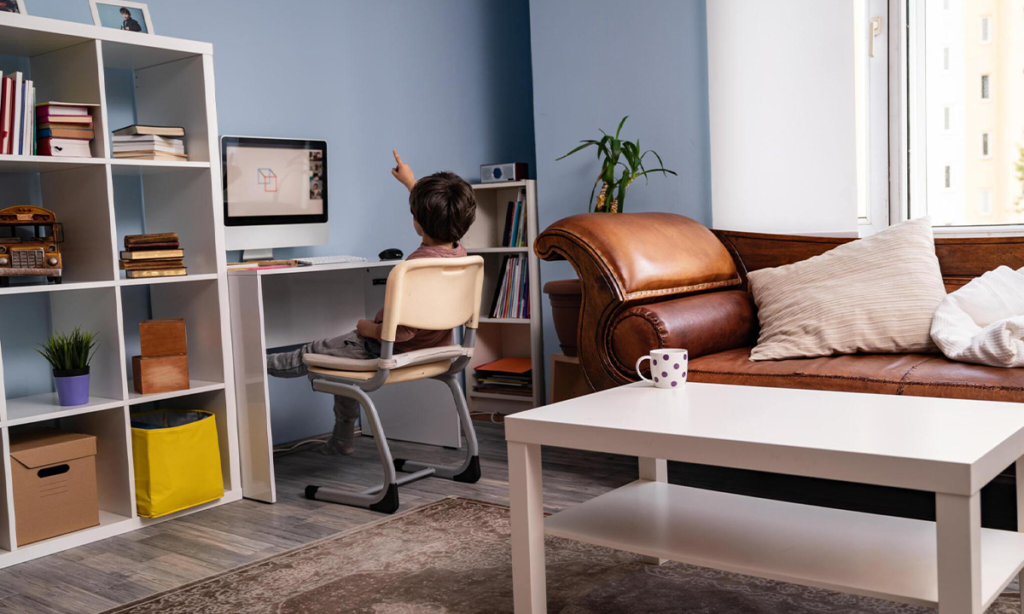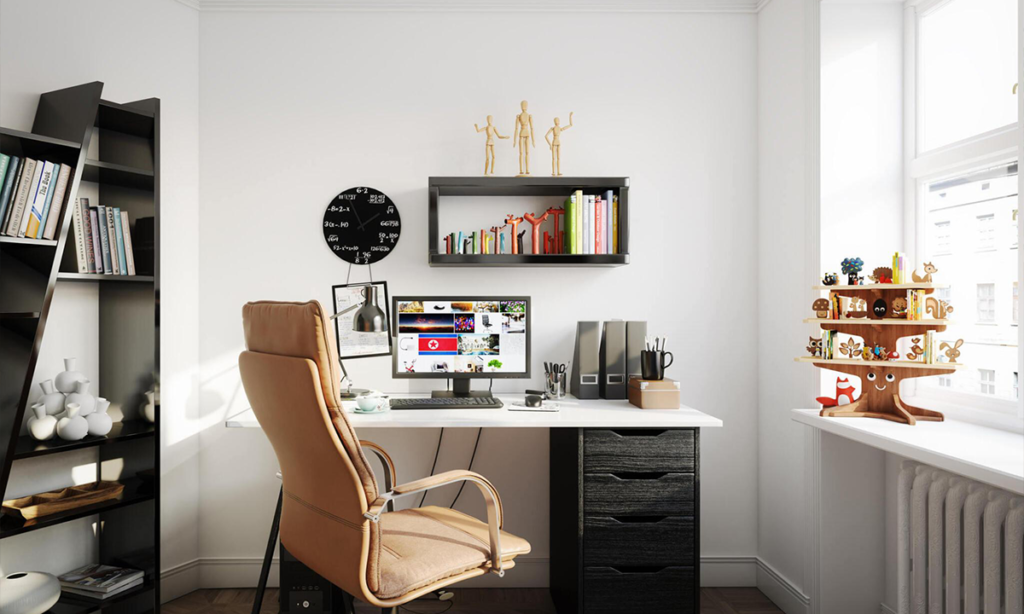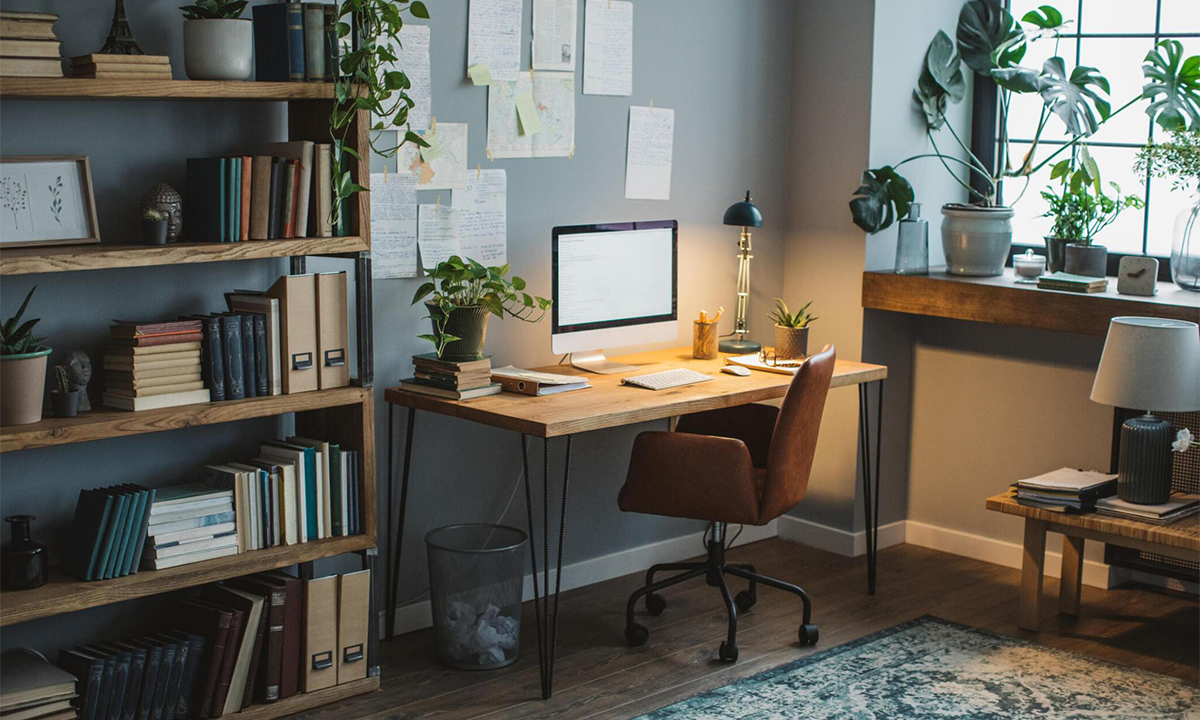Soft seating allows you to relax your body while continuing to focus on reading or note-taking. Proper lighting is another essential element. Task lighting over your desk ensures you can see clearly without eye strain. Consider adding a floor or table lamp for softer ambient light during breaks. Natural light is best when possible so locate your study space near a window.
Organization and Storage
Clutter is the enemy of productivity so optimize storage solutions in your study room. Specially implicit racking gives adequate space to books, folios, supplies from there, the sky is the limit. Look for shelves with closed cabinets at the bottom to hide away mess. Over-the-door racks are great for additional hanging folder storage.
Freestanding storage units like file cabinets and armoires provide flexible organization options. Opt for pieces with multiple compartments, drawers and cubbies. Label everything so you always know where to find what you need. Desktop organizers, wall pockets and under-desk trays help corral smaller items.
Color and Decor
While a study space should feel calm and focused, that doesn’t mean it can’t include some personality. Incorporate colors, art, plants and accessories that you find inspiring. Blues, greens and neutral tones have been shown to boost concentration but feel free to add pops of your favorite shades as accents.
Display meaningful photos, quotes, posters or wall decor that motivate you. Fresh flowers or potted plants bring life and oxygen to the air. Racks can twofold as show regions for cherished assortments, grants and keepsakes. Mats, drapes, string lights and other delicate goods give visual interest and solace.
Technology and Amenities

Modern study rooms integrate the latest tech tools to enhance the learning process. A large desktop computer or all-in-one touchscreen PC allows for research, notetaking and more. For flexibility, consider a portable laptop that can be used anywhere.
Other supportive increases incorporate a huge screen, remote console and mouse for more screen land. A quick Wireless association empowers consistent internet learning. Bluetooth speakers give fresh sound to talks, music and then some. Smart whiteboards let you brainstorm visually.
Don’t forget basics like a printer/scanner, phone chargers and a calendar/planner system. A mini fridge keeps drinks and snacks within reach. For extended study sessions, add a microwave if space allows.
Balcony or Outdoor Space
If possible, incorporate an outdoor balcony, patio or garden area connected to your study room. Taking learning outside provides a complete change of scenery to refresh the mind. Fresh air and natural elements like trees, plants and birds have restorative powers.
Designate an outdoor table and chairs. For protection from elements, add an umbrella, heat lamp or greenhouse enclosure depending on your climate. Outdoor string lights create ambiance after dark. Outdoor study nooks make it easy to switch between indoor and outdoor workspaces.
Customization and Personal Touches

Every study space should reflect the unique style and personality of its user. Consider customizing built-in shelving, cabinetry or furniture pieces. Add personal art, photos and wallpaper in favorite patterns. Monogrammed office supplies, mugs, trays and more provide little luxuries.
For the ultimate personal touch, some students even paint or wallpaper their study rooms. With the right color palette and design, this allows complete self-expression while immersed in academics. Customization ensures your study oasis feels like an extension of yourself for ultimate comfort and motivation.
What type of lighting is best for studying?
There are a few types of lighting that are generally considered best for studying:
- Task lighting: Bright, directed lighting over your desk/work area is ideal for tasks like reading, writing, and detailed work. Options include desk lamps, under cabinet lights, or clip-on lights. Proper task lighting reduces eye strain.
- Natural light: Daylight from windows is bright without being harsh. It also provides benefits like increased alertness. However, direct sunlight can cause glare and reflections, so consider blinds or curtains for control.
- Soft white light: Bulbs that emit a soft white light around 2700-3000K on the color temperature scale mimic natural daylight. They don’t tire eyes as quickly as harsher blue-toned light. Options include soft white LED bulbs.
- Lamp lighting: Floor lamps or table lamps provide softer ambient light that’s gentler on eyes than overhead fixtures. They work well for general illumination of a study area without task lighting.
- Low wattage bulbs: Using bulbs 60W or lower prevents too much brightness. Bright lights can cause eye fatigue and make it hard to focus.
- No flickering: Fluorescent bulbs or LEDs that don’t flicker are easier on the eyes than incandescent bulbs during long study sessions.
So in outline, a mix of errand and delicate white lighting works best, with choices for both normal and light lighting whenever the situation allows. Appropriate lighting arrangement is significant for solace while examining.
What is the best colour temperature for studying?
For any student, color temperature is a crucial part of study room design. The best color temperature for studying is generally considered to be between 2700K-3000K. Here’s a bit more detail:
- 2700K-3000K is considered “warm white” light, which mimics the light quality of natural sunlight. It’s soft and easy on the eyes.
- Light in this temperature range has been shown to boost concentration and focus better than cooler or more blue-toned light.
- Cooler temperatures like 4000K-5000K that are closer to daylight can cause eye strain over long periods. They’re fine for occasional use but not ideal for lengthy studying.
- 2700K is on the warmer, more yellow-toned side of the warm white spectrum. This is gentler for reading or detailed work up close.
- 3000K provides a brighter glow that’s still soft. It works better for general study area lighting versus task lights right at your desk.
- Anything under 2700K starts getting quite yellow/orange and can seem dim. Above 3000K gets bluer and harsher.
- Natural sunlight ranges from 3000K-5000K depending on conditions but the average daylight is around 5500K, which is cooler than ideal for indoors.
In short, for most comfortable studying, aim to use bulbs or light fixtures in the 2700K-3000K warm white color temperature range. This simulates sunlight without eyestrain.
All in all, the study room designs and plans investigated give moving plans to support efficiency and learning. By incorporating elements of comfort, organization, lighting, technology and personalization, anyone can create their ideal study sanctuary at home.
To bring their study room design ideas to life, many students work with an experienced interior company in Bangalore that specializes in youth-focused home interiors. For high-quality furniture and customized storage solutions, a popular choice is TesaInteriors located in Koramangala – one of the top home interiors Bangalore firms known for their innovative study space designs.



